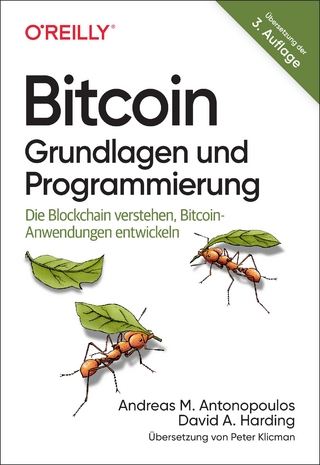
FISMA Principles and Best Practices
Auerbach (Verlag)
978-1-4200-7829-9 (ISBN)
While many agencies struggle to comply with Federal Information Security Management Act (FISMA) regulations, those that have embraced its requirements have found that their comprehensive and flexible nature provides a sound security risk management framework for the implementation of essential system security controls. Detailing a proven approach for establishing and implementing a comprehensive information security program, FISMA Principles and Best Practices: Beyond Compliance integrates compliance review, technical monitoring, and remediation efforts to explain how to achieve and maintain compliance with FISMA requirements.
Based on the author’s experience developing, implementing, and maintaining enterprise FISMA-based information technology security programs at three major federal agencies, including the U.S. Department of Housing and Urban Development, the book gives you workable solutions for establishing and operating an effective security compliance program. It delineates the processes, practices, and principles involved in managing the complexities of FISMA compliance. Describing how FISMA can be used to form the basis for an enterprise security risk management program, the book:
Provides a comprehensive analysis of FISMA requirements
Highlights the primary considerations for establishing an effective security compliance program
Illustrates successful implementation of FISMA requirements with numerous case studies
Clarifying exactly what it takes to gain and maintain FISMA compliance, Pat Howard, CISO of the Nuclear Regulatory Commission, provides detailed guidelines so you can design and staff a compliance capability, build organizational relationships, gain management support, and integrate compliance into the system development life cycle. While there is no such thing as absolute protection, this up-to-date resource reflects th
Patrick D. Howard has over 38 years of experience in the security industry, and has worked in the computer security field for the past 23 years. Mr. Howard has served as the Chief Information Security Officer at the Nuclear Regulatory Commission since March 17, 2008, and is responsible for managing NRC’s enterprise-wide information security program. Prior to joining NRC, Mr. Howard was employed at the Department of Housing and Urban Development for 3 years, where he served as HUD’s Chief Information Security Officer and managed the Department’s enterprise-wide information technology security program. Mr. Howard led HUD to a first ever "A+" score on Congress’ 2006 FISMA Report Card and was recognized as a 2007 Fed 100 winner for his accomplishments in government information technology. Prior to joining HUD, Mr. Howard was employed by the Titan Corporation supporting the Department of Transportation where he served as the Department’s Certification and Accreditation Program Manager. Mr. Howard is co-author of the Total CISSP Exam Prep Book, and author of Building and Implementing a Security Certification and Accreditation Program. Mr. Howard received a bachelor’s degree in History from the University of Oklahoma and an master's degree in International Relations from Boston University. He is a Certified Information Systems Security Professional (CISSP) and a Certified Information Security Manager (CISM). He is a member of the American Council for Technology/Industry Advisory Council (ACT/IAC) InfoSec and Privacy Shared Interest Group Government Advisory Panel and the International Information Systems Security Certification Consortium’s Government Advisory Board and the Executive Writer’s Bureau, which he chairs. Mr. Howard is also an adjunct professor of Information Assurance at Walsh College, Troy, Michigan.
Introduction. Analysis of the Federal Information Security Management Act (FISMA). Principles of FISMA Reporting. Managing FISMA Compliance. Management Support. The Information Security Organization. Staffing Considerations. Program Planning. Developing Policy and Guidance. Training and Awareness. Audit Liaison. Monitoring Mechanisms. Life-Cycle Issues. Outreach. Summary. Appendices: The FISMA Legislation. OMB FISMA Reporting Guidelines. OMB FISMA FY10 Reporting Questionnaires. Consensus Audit Guidelines. Bibliography. Index.
| Erscheint lt. Verlag | 17.5.2011 |
|---|---|
| Zusatzinfo | 2 Illustrations, black and white |
| Verlagsort | London |
| Sprache | englisch |
| Maße | 156 x 234 mm |
| Gewicht | 810 g |
| Themenwelt | Informatik ► Netzwerke ► Sicherheit / Firewall |
| Mathematik / Informatik ► Informatik ► Theorie / Studium | |
| Recht / Steuern ► Privatrecht / Bürgerliches Recht ► IT-Recht | |
| ISBN-10 | 1-4200-7829-1 / 1420078291 |
| ISBN-13 | 978-1-4200-7829-9 / 9781420078299 |
| Zustand | Neuware |
| Informationen gemäß Produktsicherheitsverordnung (GPSR) | |
| Haben Sie eine Frage zum Produkt? |
aus dem Bereich


